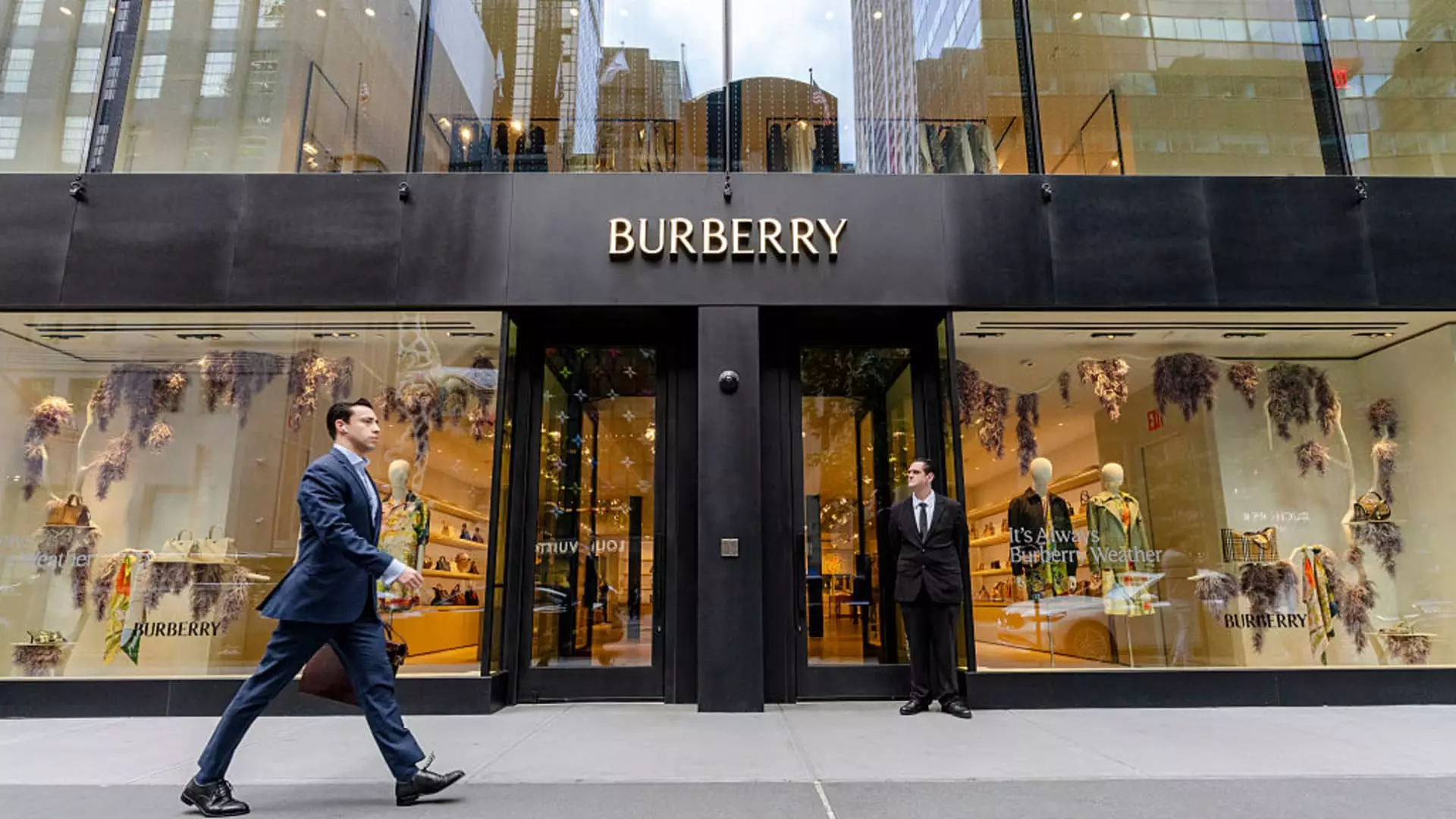Burberry’s recent uptick in American sales sparks a glimmer of optimism in an otherwise precarious luxury landscape. While a modest 4% rise in the U.S. might seem encouraging at first glance, this figure must be contextualized within a broader environment of economic instability, shifting consumer behaviors, and geopolitical headwinds. The American market, representing nearly one-fifth of Burberry’s revenue, remains a key battleground where revival is both desperately needed and fundamentally fragile. Yet, recent gains, described euphemistically by executives as signs of “diversity” and “broad appeal,” risk painting an overly optimistic picture that might ignore the deeper cracks in the brand’s foundation.
Burberry’s strategic pivot toward American consumers—focusing on heritage, iconic check patterns, and “Britishness”—appears to be a calculated gamble rather than a sustainable surge. While CEO Joshua Schulman emphasizes the “differentiation” of American consumers, his words mask the underlying anxiety: can these transient victories be sustained amid rising tariffs, economic uncertainty, and an increasingly volatile luxury market? It would be naive to view these incremental improvements as signs of long-term resilience when broader indicators suggest turbulent waters ahead. Yes, the brand’s stock response—up 8.13%—reflects investor optimism, but this enthusiasm risks being misplaced in a landscape where the fundamentals remain susceptible to external shocks.
Strategic Hardships and a Shaky Road Ahead
Burberry’s recent performance isn’t just about hopeful regional gains; it’s emblematic of a brand that is still in the throes of a fundamental transformation. The company’s overall revenues have declined, and analysts forecast further declines in key markets such as Greater China—affected heavily by a slowdown in tourism. Recognizing these challenges, Schulman’s assertion that the brand is showcasing “green shoots” might be overly generous. In reality, the luxury sector is confronting a perfect storm of headwinds: tariffs threatening U.S. sales, economic deceleration in China, and a broader shift in consumer spending patterns.
Efforts to “course correct” through job cuts, cost savings, and strategic rebranding are necessary but insufficient solutions. A 1% revenue increase in EMEIA masks the underlying vulnerabilities—these regional upticks are more like temporary respites rather than signs of a lasting turnaround. The financing maneuvers and strategic adjustments, while commendable, serve as band-aids on a much larger wound: a brand whose identity and market positioning are still in flux. The luxury consumer’s loyalty, once a given, is now more fragile, especially as younger generations prioritize experiences and authenticity over heritage branding.
Heritage or Hollow Tradition? The Illusion of Renewal
Burberry’s reliance on its iconic check pattern and British heritage as core differentiators is revealing of a larger dilemma within luxury branding: how to remain relevant in an era where authenticity and innovation collide. The brand’s emphasis on “Britishness” risks becoming a superficial reskin rather than a genuine emotional connection. The recent focus on “iconic products” and “more realistic pricing” suggests a recognition of changing consumer sensitivities, but it also highlights an ongoing struggle to reinvent without diluting the brand’s premium image.
Furthermore, the sector’s reliance on strategic narratives—heritage, exclusivity, craftsmanship—may be becoming a double-edged sword. Consumers today are increasingly skeptical of brands that cling too tightly to their history, perceiving such efforts as mere marketing ploys rather than authentic expressions of identity. Burberry’s attempts at revitalization seem more like superficial facelifts than genuine structural reforms. This superficiality could ultimately undermine its reputation, turning the brand into a hollow icon that appeals to nostalgia but fails to capture the imagination of younger, more diverse consumers.
In essence, Burberry’s current trajectory exposes the volatility of contemporary luxury branding: the delicate balance between tradition and innovation, exclusivity and accessibility, authenticity and marketing strategy. If the brand’s leadership continues to depend on fleeting regional gains and superficial rebranding efforts, it may inadvertently deepen the authenticity crisis that already threatens to dilute its appeal. True resilience will demand more than cosmetic tweaks; it requires a fundamental reevaluation of what the brand stands for in a rapidly shifting cultural and economic landscape.

